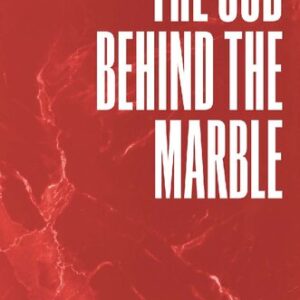Aesthetic in Kant by James Kirwan (Continuum International Publishing Group) Kant’s Critique of the Power of Judgment is widely held to be the seminal work of modern aesthetics. In recent years it has been the focus of intense interest and debate not only in philosophy but also in literary theory and all disciplines concerned with the aesthetic.
The Aesthetic in Kant is a new reading of Kant’s problematic text. It draws upon the great volume of recent philosophical work on this classic text and on the context of eighteenth-century aesthetics. Kant’s work is used as a basis on which to construct a radical alternative to the antinomy of taste – the basic problem of the aesthetic. In Kant’s account is a theory of the aesthetic that, far from establishing its `disinterested’ nature, instead makes it symptomatic of what Kant himself describes as the ineradicable human tendency to entertain `fantastic desires’.
James Kirwan is Associate Professor in the Department of Anglo-American Studies at Kobe University of Foreign Studies, Japan, and author of Literature, Rhetoric, Metaphysics (Routledge, 1990), Beauty (Manchester University Press, 1999), and Sublimity (Routledge, 2004).
The closing decades of the twentieth century saw the publication of several excellent full-length commentaries and a wealth of articles on `Kantian aesthetics’. Even now, it is a rare event for an issue of any of the major journals of aesthetics to appear without an article that concerns itself with one of the topics to be touched on hereafter. At the time of writing there is (for better or worse) no more scrutinized or controversial text in aesthetics than the Critique of the Power of Judgment. Despite this attention, however, there still remain a great many open questions, not merely regarding the interpretation of specific points in that text but also regarding its overall consistency, and ultimate significance for modem aesthetics. Such is the complexity (or, as some commentators would have it, confusion) of Kant’s text, that any assertion about it – even one that pretends to be no more than descriptive – can only be made in the face of a contrary preexisting interpretation. Ideally this work would have begun with the present Chapter 5, or even 6, that is, with some agreed interpretation of what Kant was attempting, and what he had achieved, and confined itself exclusively to the necessary critical reconstruction that would highlight those fruitful discords which are my main subject. However, as the intense scholarly interest which Kant’s text has aroused in the last few decades
amply attests, an uncontroversial thumbnail sketch of Kant’s aesthetics is, at present, quite simply impossible.
Therefore, although Kirwan’s main interest in Kant’s text does not often overlap with the central concerns of the existing secondary literature – epistemology, ethics, the nature of art, the consistency of Kant’s critical project as a whole, the rise of the bourgeoisie, a potential political role for `judgment’ – it is, nevertheless, necessary that the present work acknowledge the diversity of interpretation to be found in this literature by making explicit the understanding of Kant’s text upon which it is based. Though Kirwan’s purpose here is to make sense of taste, to find an alternative solution to Kant’s antinomies, the solutions to several currently contentious questions in the interpretation of Kant’s text are here advanced as useful to those whose attention to the text is motivated by other interests.
From the point of view of the existing literature, however, there is one large omission from Kirwan’s work that must be noted. That epistemological and ethical concerns have dominated the recent resurgence of interest in Kant’s third Critique would seem to follow naturally from the fact that Kant himself proposes that the `key’ to the problem of taste lies in the realm of the epistemological, in the `harmony of the faculties’. It was, indeed, Kant’s avowed intention that the Critique of the Power of Judgment should be a completion of his critical project as a whole. It is not, of course, the case that all recent commentators on Kant have accepted that the third Critique does represent the `bridge’ between reason and understanding that Kant intended it to be, nor is there general agreement that the `riddle of taste’, as Kant presents it to us, must ineluctably lead to a conclusion in these terms. Yet all recent commentators have largely given over their commentaries to an elucidation of what sense Kant’s solution to the riddle of taste can be made to bear in Kant’s own terms. Insofar as Kirwan does not believe that Kant’s exposition does lead ineluctably to the kind of solution he provides, nor, indeed, to the necessity for the introduction of any kind of epistemological account, a rehearsal of the relationship of the third Critique to the critical project as a whole would have been strictly redundant.
The present work, then, in contrast to a great deal of the existing secondary literature, concentrates exclusively on the problem of taste. To this end, Kirwan steers as straight a course as possible through Kant’s exposition to what he takes to be his final thesis, in order to proceed from there (albeit by regression) to Kirwan’s own critique. The scope of the present work, then, is much narrower that that of the Critique of the Power Judgment itself, For example, Kirwan largely ignors what Kant says about the social role of judgments of taste, and the genesis of art. This study is concerned almost exclusively with the phenomenology of taste that Kant presents, and, more specifically, with drawing out the implications of that phenomenology in order to show why Kirwan believes that Kant was premature in his verdict on the inscrutability of taste.
Chapters 1 and 2 sets out the nature of the judgment of taste as it is described in the Critique of the Power of Judgment, and seeks to establish that the indispensable condition of a judgment of taste is that it represents the subject’s feeling of immediate delight in the object so designated. Because of this apparent autonomy, the object of taste appears to the subject to be an object of necessary delight, though reflection on the differences that do, as a matter of fact, exist in taste, should inform that subject that the object, paradoxically enough, is only an object of `necessary’ delight for them. Kant’s analysis, Kirwan argues, does not lead to a definition of `judgment of taste’ as a judgment on an object of necessary delight, but rather as a judgment on what is cognized by the subject as an object of necessary delight. Chapter 2 deals particularly with Kant’s contentious distinction between free and dependent, or adherent, beauty, and argues that the distinction can be shown to turn on the extent to which we are conscious that a concept has been active in the process of cognizing the object which is the object of our judgment of taste; so that the ultimate touchstone of whether a judgment of taste is a judgment on a free or a dependent beauty is the subject’s feeling of whether it is the one or the other. Dependent beauty (pulchritude adhaerens), it is suggested, is best identified with judgments on aesthetic merits (in the modern rather than Kantian sense) other than beauty itself. Chapter 2 also proposes that the kind of concept one discerns in dependent beauty takes the form of what Kant calls an aesthetic idea: `that representation of the imagination that occasions much thinking though without it being possible for any determinate thought, i.e., concept, to be adequate to it, which, consequently, no language fully attains or can make intelligible’.
Having dealt in Chapters 1 and 2 with the question of what judgments of taste are, Chapter 3 turns to Kant’s explanation of their grounds. This chapter deals with Kant’s notoriously unsatisfactory proposition that the determining ground of taste lies in the supersensible substrate of humanity in general, in the subjective finality of nature for the power of judgment. It argues that it is possible to provide an alternative grounding for the phenomenon that is Kant’s starting point, and, moreover, that this grounding is immanent in Kant’s own account We gain some hint of its possibility from the specific examples of taste that Kant gives, though it is only in the ostensibly ‘supplementary’ critique of the sublime that these hints are more fully developed. For it is specifically in dealing with the sublime that Kant’s account shows how the conceptual may be introduced into taste without compromising its apparent autonomy. Though Kant denies that judgments on the sublime are judgments of taste at all, it is Kirwan’s contention in Chapter 4 that Kant’s own account shows otherwise and that, consequently, Kant’s analysis of the grounds of the sublime is, in effect, the analysis of a particular form of dependent beauty. An examination of the structure of the aesthetic idea involved in this form of judgment of taste may then carry us beyond that, in effect, ineffable grounding of taste which Kant provides.
Chapters 5 and 6 propose that the form of the idea discerned in the sublime does, indeed, conform to Kant’s description of the aesthetic idea: it is not identifiable with an idea which can be cognized by the subject as grounded in either logic, or desire, it accounts for the subject’s discernment of the object as an object of `disinterested’ pleasure, and it is ultimately unintelligible to that subject: the subject may feel that the idea somehow justifies the judgment but is unable to show how it does so. Most importantly, the form which the idea takes will also account for how the aesthetic idea can be entertained as inextricable from the pleasure, while yet that pleasure also appears to be a pleasure `in’ the object, rather than in the idea itself
Chapters 7 and 8 offer two further example

![[PDF] Aesthetic in Kant (Continuum Studies in German Philosophy)](https://pdfelite.com/wp-content/uploads/2024/04/302b8a1fddd6dc7ab12b5e1cd0c0102a-d.jpg)




Reviews
There are no reviews yet.